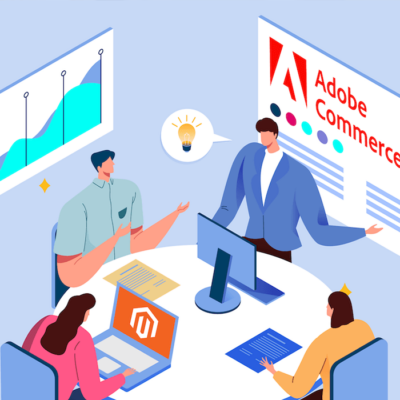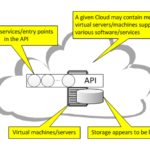Mobility and bring-your-own device (BYOD) are transforming the way people work and the way organizations support them. There’s more to mobility than simply enabling remote access—and mobile devices are far more than limited-use gadgets. Capable of accessing, storing and transmitting applications and data like traditional computers, smartphones and tablets can be used for almost any business task. To unlock the full potential of enterprise mobility, IT needs to allow people the freedom to access all their apps and data from any device, seamlessly and conveniently.
This paper presents 8 key points to consider as you develop your enterprise mobility strategy, encompassing security, user experience, IT operations and BYOD.
1. Manage and protect what matters
As people access data and apps on multiple devices—including personally-owned smartphones and tablets—it’s no longer realistic for IT to control and manage every aspect of the environment. Instead, you should focus on what matters most for your organization, and choose the mobility management models that make the most sense for your business and your mobile use cases.
2. Think “user experience” first
Mobile devices have been a key driver of consumerization in the enterprise, giving people powerful new ways to work with apps and information in their personal lives. This has raised the stakes for IT, which must now provide an experience that compares favorably with the freedom and convenience allowed by consumer technology companies. It can be helpful to sit down with users and talk about or survey their needs and preferences to make sure your mobility strategy will give them what they really want.
3. Avoid the quadruple bypass
The quadruple bypass represents the worst-case scenario for enterprise mobility: a BYOD user on a consumer-grade device using sensitive enterprise data and going directly to the cloud. This approach completely bypasses the control and visibility of IT—and it’s alarmingly common in today’s organizations. There are good reasons for this, of course. Cloud apps can help people save time and get their work done more easily, and they can also drive value for the business. The problem comes when cloud apps are used in the wrong way with the organization’s sensitive data, compromising security and compliance.
4. Pay attention to your service delivery strategy
Mobile users rely on a variety of application types—not just custom mobile apps, but also third party native mobile apps, mobilized Windows apps and SaaS solutions. In developing your mobility strategy, you should think about the mix of apps used by the people and groups in your organization, and how they should be accessed on mobile devices.
5. Define networking explicitly
Different applications and use cases can have different networking requirements, from an intranet or Microsoft SharePoint site, to an external partner’s portal, to a sensitive app requiring mutual SSL authentication. Enforcing the highest security settings at the device level degrades the user experience unnecessarily; on the other hand, requiring people to apply different settings for each app can be even more tiresome for them.
By locking down networks to specific containers or apps, with separate settings defined for each, you can make networking specific to each app without requiring extra steps from the user. People can just click on an app and get to work, while tasks such as signing in, accepting certificates or opening an app-specific VPN launch automatically by policy in the background.
6. Be clear about roles and ownership
Who in your organization will own enterprise mobility? In most companies, mobility continues to be addressed through an ad hoc approach, often by a committee overseeing IT functions from infrastructure and networking to apps. Given the strategic role of mobility in the business, and the complex matrix of user and IT requirements to be addressed, it’s crucial to clearly define the organizational structure, roles and processes around mobility. People should understand who is responsible for mobility and how they will manage it holistically across different IT functions.
7. Build compliance into your solutions
Globally, organizations face more than 300 security and privacy-related standards, regulations and laws, with more than 3,500 specific controls. It’s not enough merely to meet these requirements— you’ve also got to be able to document your compliance and allow full auditability. And that’s not to mention your own internal corporate policies. You may already have solved the compliance challenge within your network. The last thing you want to do is let enterprise mobility create a vast new problem to solve. Make sure your mobile devices and platforms support seamless compliance with government mandates, industry standards and corporate security policies, from policy- and classification-based access control to secure data storage. Your solution should provide complete logging and reporting to help you respond to audits quickly, efficiently—and successfully.
8. Prepare for the Internet of Things
Don’t just write your policies for today—keep in mind what enterprise mobility will look like in the next few years. Wearable technologies like Google Glass and smart watches will continue to change the way people use mobile technologies, providing a more human, intuitive experience while enabling new use cases. Connected vehicles—including driverless cars—will use data and cloud services in new ways to help people get where they’re going more easily and efficiently. Industrial control systems (ICS) will use and exchange enterprise data as part of human workflows as well as behind the scenes. Developments like this will continue to expand the potential of enterprise mobility, but they’ll also introduce new implications for security, compliance, manageability and user experience.
Pay attention to ongoing industry discussions about emerging technologies like these and design your mobility strategy around core principles that can apply to any type of mobile device and use case. This way, you can minimize the frequent policy changes and iterations that can confuse and frustrate people.






